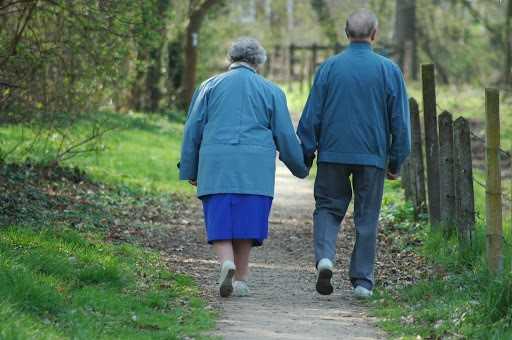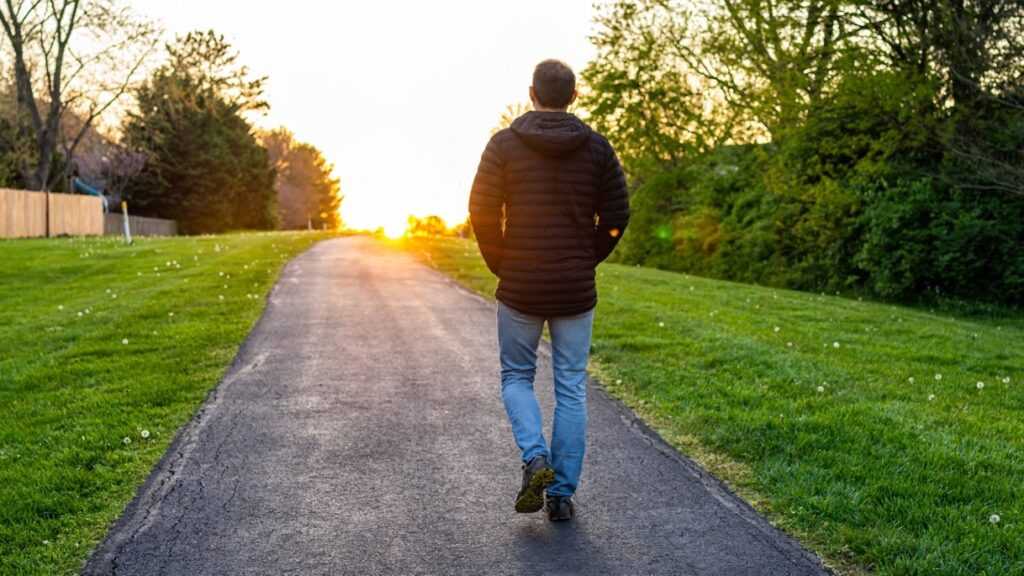At the end of the day, when you are exhausted, it’s tempting to crash on the bed, immediately post your meal. Or, to simply relax on your couch to watch your favorite soap, or latest series. But, in the times when there was no idiot box, or internet, taking a walk after meals, was a common practice.

Walking has multiple benefits, but when it comes to post meal walks, and how this age old tradition is not just good, but scientifically proven to be extremely beneficial for weight loss, controlling blood sugar, improving digestion and enhancing family bonding. Let’s discuss the major benefits of walking after meals.
- The biggest effect of walking post meals is on the blood sugar. There are multiple studies which have clearly demonstrated the blood sugar lowering benefits of post-meal low intensity walks. Let’s see the supporting literature:
- A 2009 study, examined the differing effects of a single bout of pre- or postprandial moderate exercise or no exercise on the glycaemic response to an evening (dinner) meal in 12 men & women subjects with type 2 diabetes. Three trials were conducted on separate days consisting of a rest day when subjects consumed a standardized dinner with a moderate glycaemic effect and 2 exercise days when they undertook 20 minutes of self-paced treadmill walking immediately before or 15 to 20 minutes after eating.
Researchers found that, twenty minutes of self-paced walking done shortly after meal consumption resulted in lower glucose levels at the end of exercise compared to values at the same time point when subjects had walked pre-dinner.
Thus, Postprandial walking may be more effective at lowering the glycaemic impact of the evening meal in individuals with type 2 diabetes compared with pre-meal or no exercise.
- A 2013 study, compared the effectiveness of three 15-min bouts of post-meal walking with 45 min of sustained walking on 24-h glycaemic control in older persons at risk for glucose intolerance. Inactive, overweight & diabetic older participants were recruited from the community and were non-smoking. Participants engaged in light post-meal walking for 15min or 45min, at 10:30A.M. or 4:30 P.M .
Researchers found that, both sustained morning walking and post-meal walking significantly improved 24h glycaemic control. Moreover, post-meal walking was significantly more effective than 45min of sustained morning or afternoon walking in lowering 3h post-dinner glucose.
- A 2016 study, evaluated whether specifying the timing of walking in relation to meals enhances the benefits conferred by the physical activity guidelines. A total of 41 adults with type 2 diabetes, were either advised to walk 30min each day or 10min after each main meal.
Researchers found that the post-meal blood glucose was significantly lower when participants walked after meals compared with on a single daily occasion. The improvement was particularly striking after the evening meal when the most carbohydrate was consumed and sedentary behaviours were highest.
- In a 2018 systematic review study, reviewed all the studies to test the effects of postprandial exercise on glucose regulation in individuals with type 2 diabetes. Twelve studies met the criteria, involving 135 male & female participants. Postprandial aerobic exercise decreased short-term glucose rise by 3.4-26.6% and 24h prevalence of hyperglycaemia by 11.9-65%. Resistance exercise decreased the short-term glucose area under the curve by 30% and 24h prevalence of hyperglycaemia by 35%.
Researchers concluded that, postprandial exercise may be an effective way to improve glucose control in individuals with type 2 diabetes. The most consistent benefits were seen in long-duration (≥45 min), moderate-intensity aerobic exercise. Researchers recommended that individuals with type 2 diabetes should focus on increasing energy expenditure after the largest meal of the day.

- A 2021 study, investigates the effect of 20 minutes of postprandial interval walking on glycemic control in 14 pregnant women diagnosed as having gestational diabetes mellitus. The study found that just 20 minutes of postprandial walking significantly reduced glucose levels.
- A 2022 study, evaluated the effect of 30 min postprandial walking on the post-meal glycemic response after meals with different characteristics, in 21 healthy young volunteers. The study, showed that a 30 min postprandial brisk walking session improves the glycemic response after meals with different carbohydrate content and macronutrient composition.
- A 2023 meta-analysis study, identified the impact of pre- and post-meal exercise on postprandial glucose in humans with and without type 2 diabetes mellitus.
Exercise after meal ingestion (real food or meal replacement drinks) led to a reduction in postprandial glucose compared with exercise before eating. Pre-meal exercise did not lead to significantly lower postprandial glucose compared to an inactive control.
2. Post meal walking is one of the best methods you can use for weight/fat loss. A technique being used by our ancestors very effectively.
- A 2011 study, found that, the blood sugar is at its highest 30–60 minutes after a meal and reaches its lowest 2–3 hours after a meal in normal people. Researchers tested two women, one 60-year-old Japanese female with a family history of diabetes (who was made to walk after meal) and other 67-year-old Japanese female volunteer (who did not walk after meal), and measured blood sugar just before a meal and at 30, 60, 90, and 120 minutes after a meal was consumed without walking and with walking for 30 minutes just after a meal.
The first volunteer lost nearly 3kg by fast walking after lunch and dinner for a one-month period, and the second volunteer participant lost nearly 1.5kg by walking at a slow pace for the same one-month period.
Researchers found that, walking just after a meal was more effective for weight loss than waiting one hour after eating before walking. For people who do not experience abdominal pain, fatigue, or other discomfort when walking just after a meal, walking at a brisk speed for 30 minutes as soon as possible just after lunch and dinner leads to more weight loss than does walking for 30 minutes beginning one hour after a meal has been consumed.
- A 2012 study, measured the NEAT movements continuously before and after volunteers consumed meals. The results were shocking. The people who sat after a meal, their blood sugar peaks like a mountain for about two hours. If, however people take a 15min walk at just 1mph after a meal, the blood sugar levels drop down to half. Which means, just by taking 15min walk once after three meals will drop the blood sugar levels and keep diabetes at bay.

3. Post meal movement actually aids digestion. Exercise stimulates peristalsis, which is the process of moving digested food through the GI tract.
- Acc. to a 2008 research, post-meal consumption of alcoholic beverages with high ethanol concentration (so-called digestifs) is a widespread custom to alleviate dyspeptic symptoms. In this study, 10 healthy men, immediately after the meal, received 40 ml of the following liquids: brandy, herb flavored liqueur, aquavit (each 40% ethanol concentration), espresso, water, 40% ethanol and 70% glucose.
Researchers found that, post-meal consumption of alcoholic digestifs did not affect gastric emptying rate of a solid meal nor postprandial dyspeptic complaints. However, postprandial walking accelerated gastric emptying of the meal.
4. One of the biggest benefits which no one talks about post meals walking, is the increase in family bonding and emotional connection.
There is a very strong reason why having dinner together as a family was, and still is practiced in many places. The dinner time is a time for bonding of family. When a family used to sit for dinner, they used to share the beautiful and not-so-beautiful movements of the day, and their lives.
The family used to eat and laugh together, and when the entire family used to go for a walk post dinner, where they used to plan the next day. The couple used to discuss various ideas and issues pertaining to work and life. Children used to share their experiences with their parents, and the parents used to give them words of wisdom to be applied in their lives. That’s how the family bonded.
With the advent of the idiot box and equally idiot soaps on the television, and further the internet, forget about eating dinner together, the family members don’t even talk to each other for days. It’s not surprising that family members living under one roof, do not see or talk to each other for days.
It’s not possible to have dinner together for most families, let’s accept this fact practically. It can be due to varied work hours, or some other commitments. But the simplest and a very practical way to ensure that this culture is nurtured again, is through post dinner walks.
A senior or an authoritative member of the family can ensure, that whichever members of the family are present in the house, should be going for a small post-dinner stroll together. Initially, it may have to enforced and ensured, but once the habits sets in, they would hate to miss it. The health benefits, of course, are complementary.



